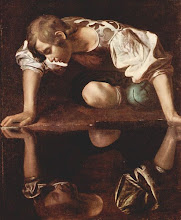Lindsey Davis’s series of mysteries starring Marcus Didius Falco, a private informer in Vespasian’s Rome, has now reached its 20th and probably final volume. Ms. Davis has not said that she won’t be writing any further Falco stories, but a Falco Companion has now been issued and certain plot points in “Nemesis” would mean some radical changes to the series if it were to continue. I’m going to assume, therefore, that the series as it now stands is finished. Inevitably in an overview there will be some SPOILERS in what follows, so you have been warned.
The events in the series take place from AD 70 to 77. Marcus Didius Falco has his 30th birthday during the course of the first book, “The Silver Pigs”. He is a private informer, i.e., a private investigator, specialising in background checks on prospective brides and grooms, finding evidence of adultery, and finding heirs or grounds for challenging wills. “The Silver Pigs” is his first foray into working for the Emperor Vespasian, which he does despite his republican views. During the events described in “The Silver Pigs” he meets his future wife, Helena Justina, the daughter of a senator, Decimus Camillus Verus. Over the course of the series Falco undertakes work for the Emperor as well as private commissions, and some investigations based on his own desire to see justice done. Recurring characters are Falco’s estranged parents, his sisters and their husbands and children, Falco’s mother’s family in the country, Helena Justina’s parents and brothers, and Falco’s best friend, Petronius Longus, who is a captain in the vigiles (the night watch which combined duties fire fighting and combatting minor and some not so minor crimes).
Falco’s activities take him over most of the Empire. Apart from the stories set in Rome itself, Falco also travels to various parts of Italy, to Britain, the frontier in Germany, Spain, North Africa, Egypt, the Eastern frontier, and Greece. He is a Roman citizen, but one of Rome’s urban poor. His clients come from all levels of society and over the course of the series he improves his status entering the middle rank (an eques) and by the end of the last book, becoming rich. The variety of clients means we get to see many different aspects of Roman life.
The books are all narrated by Falco himself in the first person, and his narrative voice is one of the strengths of the series. It shows a wry, ironic sense of humour, not taking Falco himself or life too seriously, and certainly not taking seriously any claims to grandeur or self importance from those who consider themselves socially or intellectually superior. This tone is hugely enjoyable, but the reader can’t help but wonder sometimes whether other characters, particularly Falco’s family and friends, would see events in quite the same way. And this becomes particularly problematic with the recurring character Anacrites, Vespasian’s Chief Spy. Although Falco tells us that Anacrites had set him up on his mission to Petra in “Last Act in Palmyra”, meaning him to be killed, and Anacrites later stalks Falco’s sister Maia in “The Body in the Bath House”, I at least found it impossible to take Anacrites seriously as a villain or a dangerous threat to Falco.
Although the humorous tone is, as I said, enjoyable, some may find it anachronistic. The only time I found the humour really jarred was in the last book, “Nemesis”, when Falco wishes that there were some way of proving or disproving paternity through the blood and hopes that the researchers in Alexandria are working on it.
I recently read the whole series through in sequence over a couple of months, which may not have been the best way to read them. Read like this, I have to say that the way Geminus, the auctioneer employed in “Shadows in Bronze” to auction off Pertinax’s effects, turns out to be Falco’s father who had walked out and abandoned the family when Falco was 7 struck me as clumsy. Once he was in the series, though, he became an important character, along with Falco’s other relations. The stories where we meet new members of Falco’s family are always particularly enjoyable. I also found the on again off again on again nature of Falco’s relationship with Helena Justina very tedious after the first couple of books until they finally settled down together in “Poseidon’s Gold”.

Another time where I thought Ms. Davis let her readers down was in “Scandal Takes a Holiday”, when Falco, who we have been repeatedly told cannot swim, was thrown overboard by pirates out at sea near Ostia, yet manages to float on his back until he just happens to meet another boat, which just happens to be his father’s skiff waiting to take goods off a ship unobserved so as to avoid import duty. For me that definitely broke the flow of the narrative as I pondered its unlikelihood.
Having said that I would like to stress that Lindsey Davis does a wonderful job over 20 novels in the very demanding genre of historical mysteries, managing to balance enjoyable stories with the exploration of a civilisation superficially similar but actually very different from our own.




























